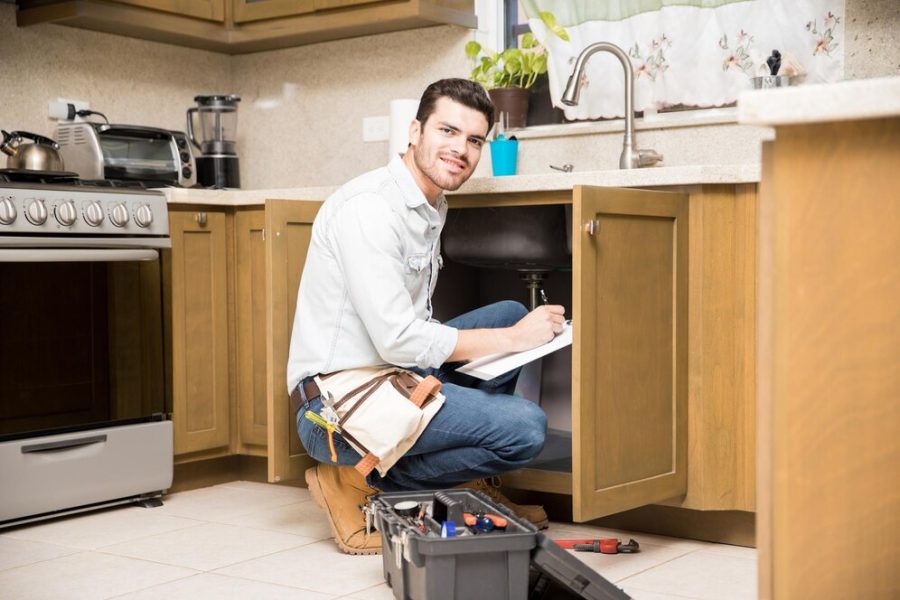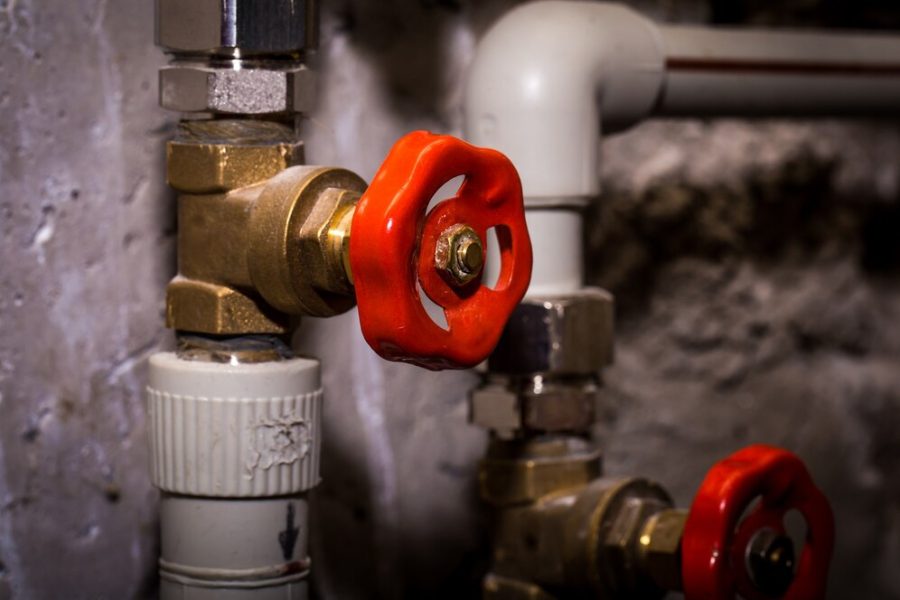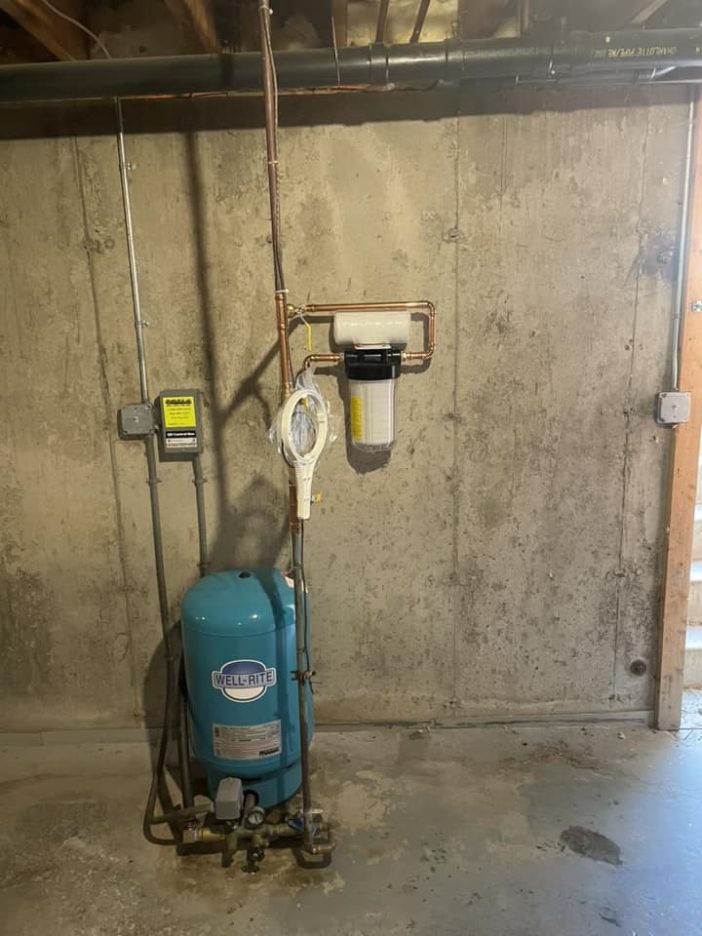Engaging a plumber for a repair, installation, or routine maintenance can be daunting, especially if you’re not prepared. Many homeowners underestimate the importance of preparing for plumbing services, but this preparation can be crucial to ensuring a smooth, efficient, and cost-effective experience.
Here are seven essential steps to get ready for plumbing services in Torrington, CT, and avoid the common pitfalls that can lead to extra expenses or prolonged repair times.
Table of Contents
Key Takeaways
Why Preparation Is Key for Plumbing Services
7 Essential Steps to Prepare for Plumbing Services
1. Identify the Problem Areas
2. Clear the Work Area
3. Shut Off the Water Supply
4. Communicate Clearly with Your Plumber
5. Ask Questions Before Work Begins
6. Prepare for Payment and Understand the Costs
7. Plan for Follow-Up and Future Maintenance
What to Expect After the Plumbing Service
Frequently Asked Questions
Get Expert Plumbing Services in Torrington, CT, with L&P Plumbing!
Key Takeaways✔ Clear communication with your plumber prevents misunderstandings, ensuring satisfactory and cost-effective plumbing services. ✔ A well-prepared workspace enables the plumber to work efficiently, reducing time and labor costs. ✔ Thoroughly inspect and document plumbing issues, like leaks or low water pressure, to help the plumber diagnose and fix problems quickly. ✔ Remove obstructions and protect valuables to give the plumber easy access, ensuring a safer and more efficient working environment. ✔ Know how and when to turn off the main and local water valves to prevent further damage before plumbing services begin. ✔ Provide detailed information about the issue, set expectations, and request a written estimate to avoid surprises during the service. ✔ Review the cost estimate, confirm payment methods, and ask about warranties on labor and parts for future protection. ✔ Schedule follow-ups and ask for maintenance tips to ensure long-term plumbing system performance and avoid future issues. |

Why Preparation Is Key for Plumbing Services
Preparation ensures the success of any plumbing project. Here’s why:
- Avoid Miscommunication: Properly preparing and communicating your needs can prevent misunderstandings that could lead to unsatisfactory work or additional costs.
- Speed Up the Process: A well-prepared environment allows the plumber to work quickly and efficiently, reducing the time and labor costs associated with the plumbing services.
- Prevent Further Damage: Being proactive about identifying and preparing for plumbing issues can prevent minor problems from escalating into major damage, saving you money in the long run.
7 Essential Steps to Prepare for Plumbing Services
1. Identify the Problem Areas
One of the most important steps in preparing for plumbing services is to identify the specific problem areas in your home. This initial inspection sets the stage for the plumber to diagnose and resolve the issue effectively.
Inspect Your Plumbing System
Start by thoroughly examining your plumbing system. Here’s how to do it:
- Check Visible Pipes: Look at exposed pipes in areas like the basement, under sinks, or in utility rooms. Check for any signs of corrosion, leaks, or moisture buildup around joints and fittings.
- Listen for Noises: Pay attention to unusual sounds such as gurgling, banging, or whistling noises when you use your faucets or flush the toilet. These noises often indicate underlying issues like trapped air, blockages, or pressure problems.
- Monitor Water Pressure: Turn on faucets in different parts of your home to check for consistent water pressure. Low water pressure could signal blockages, leaks, or issues with the water supply line.
Note Down Symptoms
While inspecting, document any symptoms you observe. Providing these detailed observations to your plumber helps them understand the scope of the plumbing services required, which can lead to a quicker diagnosis and repair.
- Leaking or Dripping: Is there a constant drip or visible water pooling under sinks, near appliances, or around pipes? Household leaks can lead to nearly 10,000 gallons of water wasted each year on average. Addressing leaks promptly can save a significant amount of water and reduce your utility bills.
- Slow Drainage: Are your sinks, bathtubs, or toilets draining slower than usual? This could indicate a clog or a more serious blockage in the pipes.
- Water Stains: Look for water stains on walls, ceilings, or floors. These are telltale signs of hidden leaks or plumbing issues that need immediate attention.
- Odd Smells: Musty or foul odors around drains can indicate issues like sewer line problems or buildup of debris in the pipes.
Gather Relevant Information
Beyond just identifying symptoms, gather any additional information that may assist the plumber:
- Historical Issues: If you’ve experienced similar plumbing problems in the past, note down what was done to fix them. This can provide the plumber with insights into recurring issues.
- Usage Patterns: Mention if the problem is consistent or happens at specific times (e.g., during heavy rain, when multiple appliances are used). This helps the plumber pinpoint the cause.
- Water Source Information: If your home uses a well, municipal water, or other sources, this information can help the plumber tailor their approach to the plumbing services.
2. Clear the Work Area
A clutter-free workspace is vital for efficient plumbing services. Ensuring the plumber has easy access to the problem areas can significantly impact the time and quality of the work done.
Remove Obstructions
Before the plumber arrives, take the following steps to clear the work area:
- Kitchen and Bathrooms: Remove items like cleaning supplies, toiletries, and personal items from under sinks and around fixtures. Clear countertops to provide space for tools and parts.
- Access Points: Clear pathways to areas where the plumber might need to work, such as basements, utility rooms, or attics. Move furniture or storage items that may obstruct access to pipes, water heaters, or shut-off valves.
- Outdoor Areas: If the plumbing services involve outdoor fixtures, such as hose bibs, irrigation systems, or sewer lines, ensure that landscaping, garden tools, or outdoor furniture do not block access.
Protect Valuables
Taking a few minutes to protect your belongings can prevent accidental damage:
- Cover Furniture: If the plumbing work is near furniture or appliances, cover them with plastic sheets or drop cloths to protect against dust, water, or debris.
- Remove Breakables: Take down any fragile items such as picture frames, vases, or decorative objects near the work area. Vibrations and movement during plumbing services can accidentally knock items over.
Create a Safe Environment
Safety is a priority during any home repair service:
- Keep Pets and Children Away: Ensure pets and children are in a different part of the house. Plumbing services often involve tools, chemicals, and equipment that could be hazardous.
- Provide Adequate Lighting: Make sure the work area is well-lit. Proper lighting not only makes the plumber’s job easier but also ensures they can see and address potential issues clearly.
3. Shut Off the Water Supply
Shutting off the water supply is a critical step to prevent further damage and facilitate efficient plumbing services.
Locate the Main Water Valve
Knowing the location of your main water shut-off valve is essential in case of an emergency:
- Find the Valve: In most homes, the main shut-off valve is located near the water meter, often in the basement, crawl space, or along an exterior wall. In warmer climates, it may be located outside the house.
- Test the Valve: Ensure the valve is functional by turning it off and on periodically. A stuck or faulty valve can complicate plumbing services if it fails during an emergency.
Turn Off Local Valves
For minor repairs or maintenance:
- Use Fixture Shut-Offs: Many sinks, toilets, and appliances have local shut-off valves located beneath or behind them. These allow you to isolate water to a specific fixture without disrupting the entire home’s water supply.
- Communicate with the Plumber: Before shutting off any water supply, ask the plumber if they want you to turn it off or if they will handle it upon arrival. This ensures that the right steps are taken without interfering with the service.
Drain Excess Water
In some cases, draining water from the pipes can prevent water damage and make the plumbing services more straightforward:
- Open Faucets: After turning off the water supply, open faucets in the affected area to drain remaining water from the pipes.
- Flush Toilets: If the work involves toilet repairs, flush to empty the tank and bowl. This can prevent spillage and mess during the repair.

4. Communicate Clearly with Your Plumber
Effective communication is vital for successful plumbing services. Clear, concise communication ensures the plumber understands the issue and your expectations.
Provide Detailed Information
When the plumber arrives, be ready to provide the information you gathered:
- Explain the Symptoms: Describe what you’ve observed, including when the issue started, any noises or smells, and any temporary solutions you’ve tried.
- Show the Problem Areas: Physically show the plumber the affected areas. Pointing out where you’ve noticed leaks, noises, or water damage can help the plumber assess the situation quickly.
- Discuss Possible Causes: If you have any thoughts on what might be causing the problem, share them. For example, if you suspect a clogged drain or a faulty valve, this insight can guide the plumber in their initial inspection.
Discuss Your Expectations
Set clear expectations for the plumbing services:
- Budget Concerns: If you have a budget in mind, communicate this upfront. The plumber can then suggest the most cost-effective solutions that fit within your financial constraints.
- Quality of Work: Discuss the level of quality you expect, including the use of specific brands or types of materials. Some plumbing services offer options ranging from basic to premium, so it’s important to align on your preferences.
- Time Constraints: If you have a tight schedule, let the plumber know. They can then prioritize the work to ensure it’s completed within your desired timeframe.
Request an Estimate
Before the plumber begins work:
- Get a Written Estimate: A written estimate should outline the expected costs, including labor, parts, and any additional fees. This document provides a clear understanding of what you’re paying for.
- Clarify Payment Terms: Ask about the payment schedule, including when payments are due and if a deposit is required. Some plumbing services may offer payment plans for larger jobs.
5. Ask Questions Before Work Begins
Being informed about the plumbing services helps you understand what to expect and ensures there are no surprises.
Clarify the Process
Before work begins:
- Understand the Steps: Ask the plumber to walk you through the process they will use to address the issue. This helps you know what to expect and allows you to anticipate any disruptions.
- Ask About Alternatives: Sometimes, there may be multiple ways to fix a plumbing issue. Ask if there are alternative solutions, including pros and cons, so you can make an informed decision.
Inquire About Materials and Parts
Knowing what materials and parts will be used is important for the longevity of the repair:
- Type of Materials: Ask about the quality and type of materials the plumber will use. For example, are they using durable PEX pipes, copper, or PVC for the repair? The materials used can affect the longevity and performance of the plumbing services.
- Special Orders: If specific parts need to be ordered, inquire about the timeline for receiving them. This can help you understand if the job will be a quick fix or if it will require additional appointments.
Understand the Timeline
Knowing the timeline helps you plan accordingly:
- Estimated Duration: Ask how long the job is expected to take. This allows you to plan your day and make necessary arrangements, especially if the plumbing services will disrupt essential facilities like the kitchen or bathroom.
- Contingency Plans: Ask what happens if the repair takes longer than expected. Understanding how the plumber will handle unexpected complications provides peace of mind.
6. Prepare for Payment and Understand the Costs
Understanding the cost structure of plumbing services helps you avoid surprises when the job is done.
Know the Payment Options
Different plumbing services may have varying payment policies:
- Accepted Payment Methods: Confirm the accepted payment methods, such as credit card, cash, or check. Some plumbing services may also offer financing options for larger jobs.
- Deposit Requirements: Ask if a deposit is required before work begins. This is common for extensive repairs or installations and helps cover initial costs.
Review the Estimate
Before committing to the work:
- Breakdown of Costs: Review the estimate for a breakdown of labor, materials, and additional fees. Ensure there are no hidden costs that could lead to unexpected expenses.
- Scope of Work: Verify that the estimate covers the full scope of the plumbing services. If there are additional tasks you want to be addressed, mention them now to avoid extra charges later.
Ask About Warranties
Warranties provide a safeguard against future problems:
- Workmanship Warranty: Inquire if the plumber offers a warranty on their work. This warranty covers the labor aspect of the job and can range from 30 days to several years, depending on the plumbing services.
- Parts Warranty: Ask about warranties on any parts or fixtures used. Manufacturer warranties typically cover defects in materials, providing added peace of mind.
7. Plan for Follow-Up and Future Maintenance
The end of plumbing services doesn’t mean the end of the maintenance process. Planning for follow-up ensures long-term performance and efficiency.
Schedule a Follow-Up
Depending on the complexity of the work:
- Routine Check-Up: Some plumbing services include a follow-up visit to ensure everything is functioning correctly. If your issue was complex, like a major pipe replacement, ask the plumber if a follow-up is necessary.
- Ongoing Maintenance: For ongoing maintenance services like water heater inspections or drain cleaning, discuss the frequency of these visits to keep your system running smoothly.
Keep Records
Documentation is key to tracking the health of your plumbing system:
- Service Records: Keep a record of all plumbing services performed, including dates, work completed, and any parts used. This record helps future plumbers understand the history of your system.
- Warranty Information: Store any warranty documents for parts and labor in a safe place. If an issue arises within the warranty period, you can refer to this documentation for free or reduced-cost repairs.
What to Expect After the Plumbing Service
The plumbing fixtures market grew at a 7.1% compound annual growth rate (CAGR), rising from $91.68 billion in 2022 to $98.16 billion in 2023,. This growth reflects how more homeowners are investing in quality plumbing services. With this in mind, it’s only crucial to anticipate what homeowners should do once the service is done. Here are a few considerations:
- Work Inspection: The plumber should conduct a final inspection to ensure the issue is resolved and the system is functioning correctly.
- Functional Testing: Expect the plumber to test the repaired or installed components to confirm that they work as intended.
- Clean-Up: A professional plumbing service includes cleaning the work area, leaving your home as neat as possible.
- Final Review: The plumber should review the work done with you, explaining what was fixed and offering any additional recommendations.
Frequently Asked Questions
How often should you schedule routine plumbing maintenance?
Routine plumbing maintenance should be scheduled annually to ensure your system is functioning correctly. This helps detect minor issues, such as small leaks or clogs before they turn into major problems. Regular maintenance can extend the lifespan of your plumbing and improve efficiency.
What are the most common plumbing issues homeowners face?
Common plumbing issues include leaky faucets, clogged drains, and running toilets. These problems can lead to higher water bills and potential water damage if not addressed promptly. Most of these issues can be prevented or minimized with proper maintenance and timely repairs.
How can you tell if your pipes need to be replaced?
Signs that pipes need replacing include frequent leaks, discolored water, and reduced water pressure. Visible corrosion or rust on exposed pipes is also a clear indication that they may be deteriorating. Replacing old or damaged pipes can prevent water contamination and future leaks.
What should you do in a plumbing emergency?
In a plumbing emergency, immediately shut off the main water valve to prevent further damage. Contact a professional plumber right away to assess and fix the issue. Avoid using water fixtures until the plumber arrives to avoid exacerbating the problem.
Can plumbing services help with water conservation?
Yes, plumbing services can help by installing water-saving fixtures like low-flow toilets and showerheads. Plumbers can also repair leaks and provide advice on reducing water usage throughout the home. These measures can significantly lower water bills and promote environmental sustainability.

Get Expert Plumbing Services in Torrington, CT, with L&P Plumbing!
Ready to address your plumbing issues and ensure your home runs smoothly? Whether you need routine maintenance, emergency repairs, or water-saving solutions, L&P Plumbing has the expertise to handle all your plumbing needs. Don’t wait—residents can trust L&P Plumbing to deliver quality service every time. Contact L&P Plumbing in Torrington, CT, for professional and reliable plumbing services.

